
Janus Henderson Investors: Is global real money growth about to surge?
The baseline expectation here remains that the market / policy response to the coronavirus shock.
13.03.2020 | 08:25 Uhr
Compounded now by an oil supply shock – will result in an early and strong pick-up in global real money growth, setting the stage for a solid rebound in economic activity during H2 2020 and above-trend growth in 2021.
PMI results for February confirm a dramatic weakening of economic activity driven by supply-side disruption. The global manufacturing PMI output index plunged to a recessionary level but supplier delivery times lengthened to an extent typical of boom conditions. Production shutdowns led to a rise in order backlogs despite a sharp drop incoming bookings – see first and second charts.
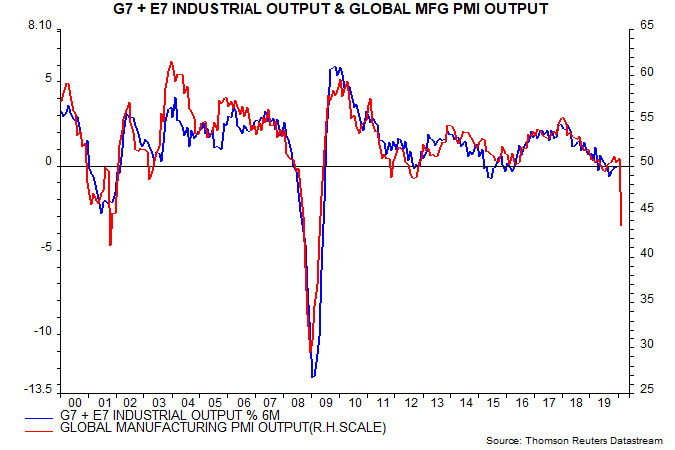
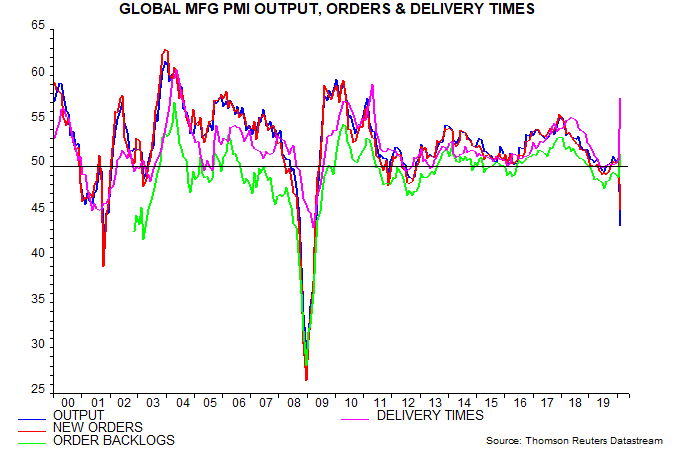
Economies usually recover swiftly from supply-driven shocks. Japanese industrial output plunged 16.5% in March 2011 following the Tohoku earthquake / tsunami but had recouped 70% of the loss three months later – third chart.
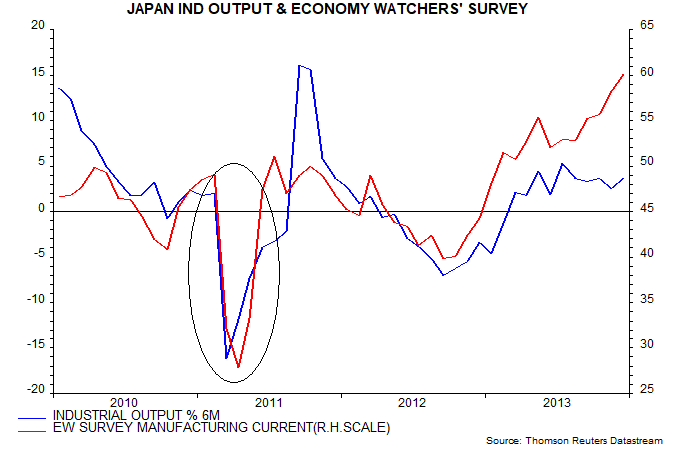
The coronavirus shock has depressed demand as well as supply and markets are fearful of a negative spiral of income losses, further spending cut-backs, credit tightening and layoffs. Policy-makers recognise the risks and are likely to provide cash flow support and incentives for banks to extend credit lines.
Chinese policy actions are already yielding results, judging from the February PMI report: manufacturers’ year-ahead output expectations reached a five-year high, reflecting “proactive macroeconomic policies and … support for small and midsized enterprises”.
The market response to the shock, meanwhile, will, on the view here, deliver significant demand stimulus, with lower risk-free yields and commodity prices offsetting equity market weakness and higher credit spreads.
G7 narrow money growth had already recovered in response to the fall in yields through late 2019; the recent further plunge could turbo-charge the revival – fourth chart.
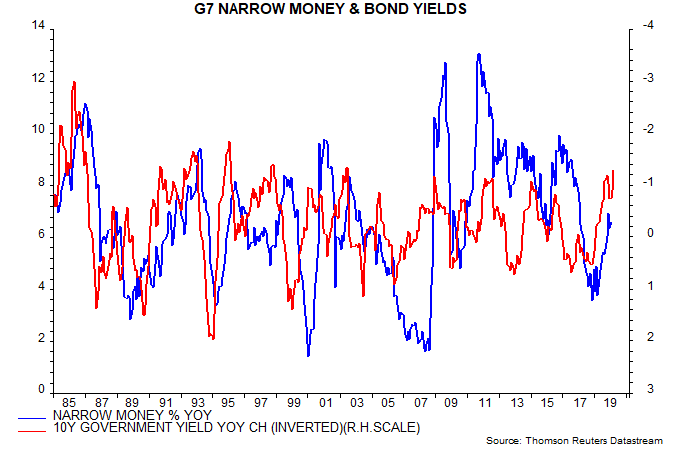
US six-month narrow money growth is estimated to have risen in February, based on data for the first three weeks, while mortgage applications were surging before the latest yield decline – fifth chart. Japanese six-month M1 growth reached a 25-month high last month.
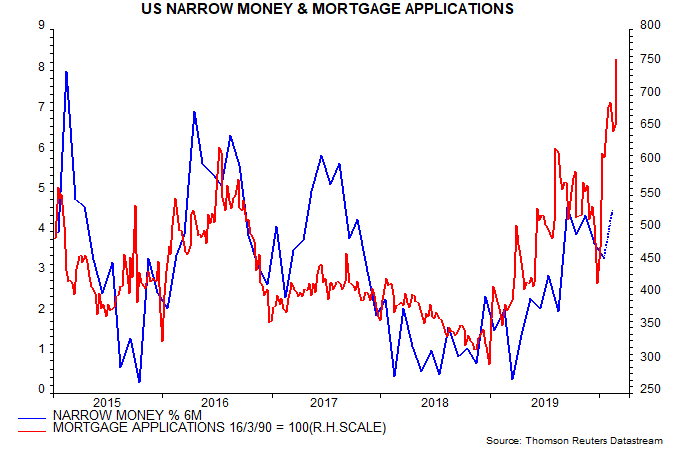
The oil price collapse, meanwhile, will give a significant boost to real money growth. Based on current levels, global (i.e. G7 plus E7) six-month consumer price momentum could fall by more than 1 pp (not annualised) from its January peak – sixth chart.
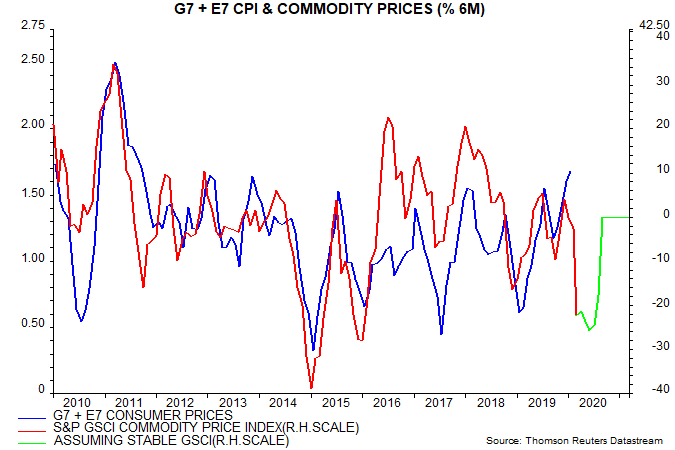
The long-standing view here has been that a rise in global six-month real narrow money growth above 3% was needed to signal an economic recovery. The failure to reach this level in late 2019 and a subsequent relapse prompted a negative reassessment of economic prospects (e.g. here).
With real money growth at 1.7% in January, the combination of a nominal pick-up and plunge in inflation is judged likely to result in the 3% level being reached in March / April.
Coronavirus developments, of course, will be key for the timing of an economic rebound. Investors should be wary of economists posing as epidemiologists but the declines in daily new cases in China and Korea suggest that containment / delay measures can swiftly yield significant results – seventh chart.
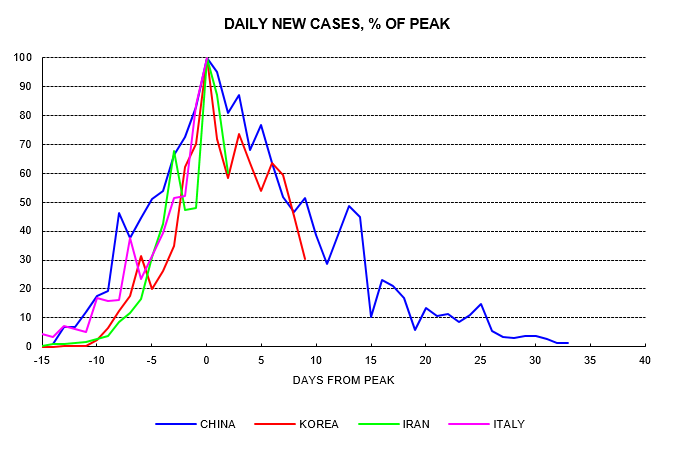




Diesen Beitrag teilen: